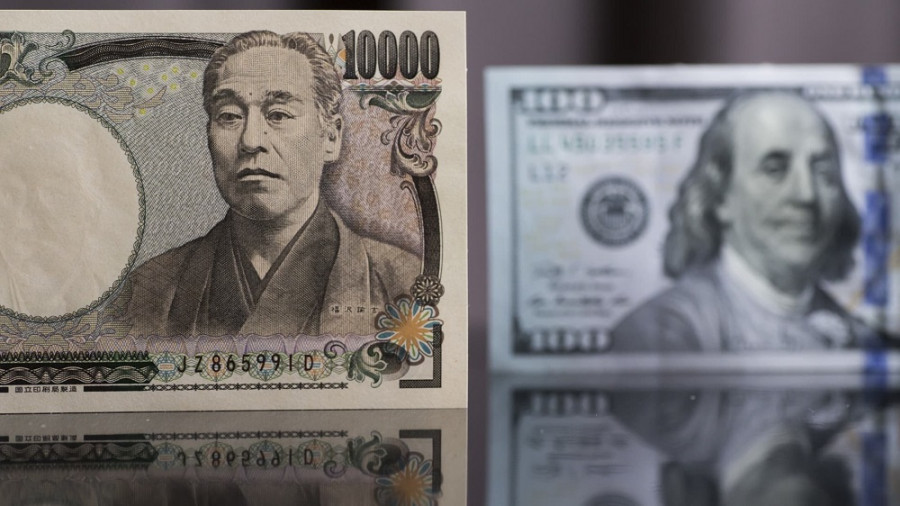The USD/JPY pair dropped by 200 points over two days and on Tuesday hit a nearly four-week low, testing the support level at 142.70 (the middle line of the Bollinger Bands indicator on the D1 chart). The yen was gaining strength not only against the US dollar but also in many other cross-pairings. However, on Wednesday, USD/JPY buyers recovered nearly all lost positions, pushing the pair back into the 144 range. The reason: Donald Trump, who threatened to raise tariffs on Japanese goods once again. Reacting to his statements, the yen weakened across the market, and USD/JPY rebounded 150 points from its local low.

To begin with, July 9 marks the end of the so-called "preferential regime"—a three-month period during which the U.S. applied a universal 10% tariff rate in place of individual tariffs. Trump had expected that within those three months, Washington would strike trade deals with dozens of countries targeted by these "major tariffs." But reality turned out differently: so far, the U.S. has only reached agreements with the United Kingdom and China.
This state of affairs doesn't satisfy the White House. Recently, Trump announced that he would not extend the "tariff pause" and instead would confront trading partners with a choice: either accept the proposed deal or face higher tariffs. He cited Japan as an example, stating that after July 9, the U.S. could impose tariffs of 30% or 35% on Japanese goods.
Not long ago, Trump had spoken of progress in negotiations between Washington and Tokyo. According to U.S. media, the Japanese government was prepared to make major concessions to reach a deal. For instance, insiders said Japan was willing to revise—or rather, relax—its strict automotive safety standards, which often restrict access to the Japanese market.
However, those rumors remained just that: rumors. In reality, negotiations stalled and hit a deadlock. According to Trump, reaching a trade deal with Japan would be "very difficult." He also expressed doubt that the two sides would be able to find a compromise at all. In this context, he noted that Japan is among the countries that may receive a notice regarding increased customs tariffs.
Can one "trust" long positions on USD/JPY under these conditions? In my view, no. First, the U.S. president could at the last minute extend the "preferential regime," at least concerning Japan and the EU. Second, for sustainable growth in USD/JPY, a strong dollar is needed, yet the broader fundamental backdrop does not favor the greenback.
For example, the June ISM Manufacturing Index remained in contraction territory (despite a formal rise to 49), and the June ADP report fell into negative territory for the first time since December 2020. The number of jobs added in the private sector came in at -33,000, whereas most analysts had forecast an increase of 99,000. The previous month's figure was also revised downward, from 37,000 to 29,000. According to an ADP spokesperson, last month's job losses were due to "employers' reluctance to replace departing workers and a general hesitancy to hire." As is well known, the ADP report serves as a precursor to the official data release. And although the figures do not always correlate with Nonfarm Payrolls, such a signal ahead of Thursday's release doesn't bode well for the greenback.
Therefore, for the time being, it is sensible to adopt a wait-and-see approach with USD/JPY. Selling is not relevant at the moment, as the yen is under pressure due to tariff uncertainty stemming from Trump's threats to impose 35% duties on Japanese goods. USD/JPY traders are reacting to this fundamental factor, which allowed buyers to climb more than 150 points. However, going long on the pair also looks risky, given the broader vulnerability of the U.S. currency. If the June Nonfarm Payrolls report, released on Thursday (July 3), turns out weaker than expected (i.e., job growth comes in below the 100K target), USD/JPY sellers will likely regain control, not due to yen strength, but due to dollar weakness.
From a technical perspective, the pair on the daily chart remains between the lower and middle lines of the Bollinger Bands indicator and below all Ichimoku indicator lines (including the Kumo cloud). USD/JPY buyers attempted to test the lower boundary of the cloud (144.20) but pulled back and are now drifting between the 143 and 144 levels. In other words, technically, the setup still appears bearish, but for a renewed downward trend to take hold, sellers need a proper catalyst—either weak Nonfarm Payrolls data and/or positive developments in the "negotiation track." Therefore, it is currently reasonable to stay out of the market given the overall uncertainty. The yen's "flight" has been interrupted, but it is far too early to count the Japanese currency out.












